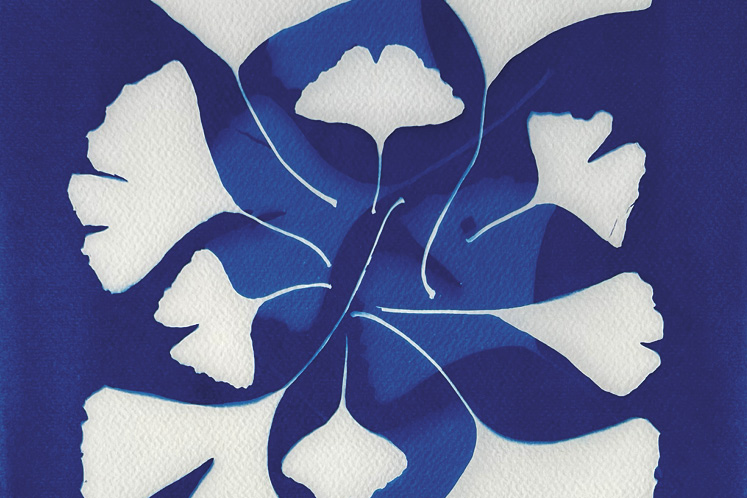Meet the Maker: Jo Thomson
Mono artist Jo Thomson harnesses the power of sunlight – and the power of her darkroom – to create bright cyanotypes and photograms of local flora.
Sitting in a cozy wooden loft overlooking a pond on her Mono property, photo artist Jo Thomson is surrounded by striking examples of her latest work – cameraless photographs of botanicals. Adorning the walls are her framed prints of Queen Anne’s lace, ferns and feathers against black or blue backgrounds.
Jo uses cyanotype printing to create the blue-based images and traditional darkroom printing for the black-based photograms. Both art forms have endured for more than a hundred years despite the advent of digital technologies, and both rely on direct contact between items foraged from nature – feathers, leaves, fresh and dried flowers – and light-sensitive paper.
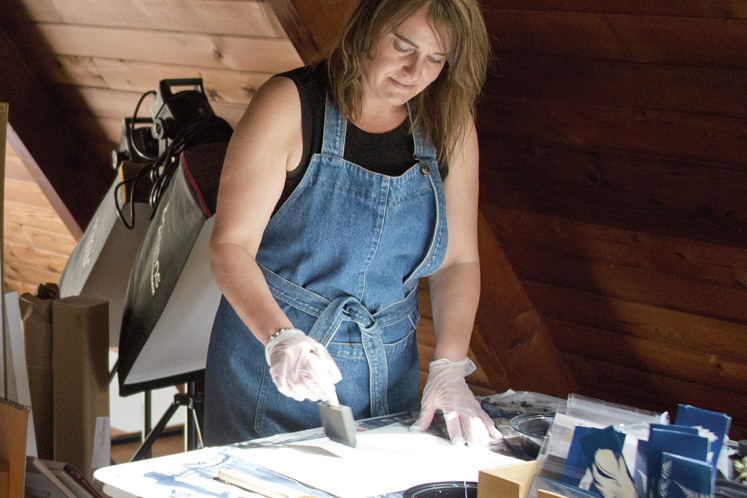
To make a cyanotype print, Jo Thomson applies photosensitive solution to watercolour paper that causes it to react to sunlight. Photography by Pete Paterson.
Growing up near the rugged coast of Devon, England, Jo loved exploring the area’s sandy beaches, plunging cliffs and hidden coves. After completing high school, she studied art and developed a love of recording the world around her. She went on to earn a BA in photography, spending many hours in the darkroom. “I never really forgot the magic of that time,” she says.
In 2015 Jo and her husband, Blair, along with their children, Zach and Dexter, now 16 and 12, moved to Mono from bustling Exeter, England. Jo marvels at the differences between her former city life and her country existence. The family resides on 10 acres that include forest trails, a pond and plenty of enchanting places for her boys to roam.
Jo works alongside Blair in their graphic design and branding business, Believe In, which was founded in England more than two decades ago and maintains a studio in Exeter. But during the pandemic, she itched to get back to her roots and created a darkroom in their basement.
Then she investigated the history of cameraless photography and started experimenting. “Everything is now reproducible. I like the fact that each print is entirely unique. Even if I use the exact same plant, it’s always going to be a little bit different.”
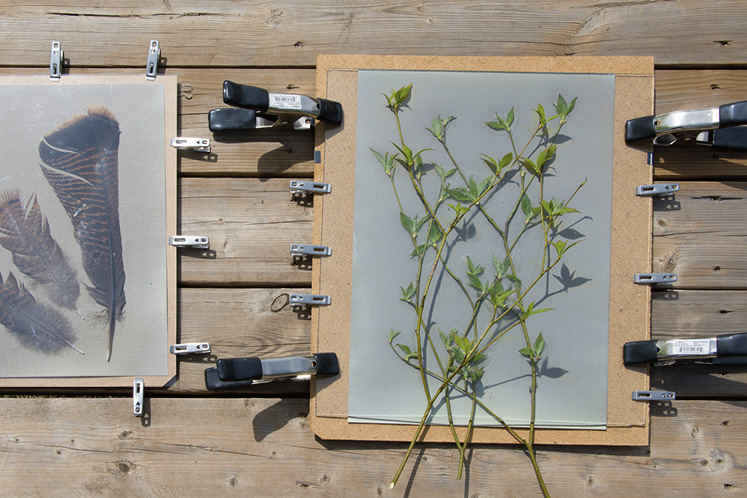
Jo places feathers and botanicals between glass and treated paper, then clips them together before she places them in the sunlight.
To create a cyanotype, Jo paints watercolour paper with two photographic solutions that, when mixed, are light-sensitive. When the paper is dry, Jo takes her subject – a botanical or a feather – and places it on the paper. Sometimes the compositions are simple, allowing a single leaf to be the hero, or she may experiment with double exposures or overlaying materials. She gingerly clamps a piece of glass onto the paper, careful not to move the subject. Then it’s time for the sun to do its job.
The exposure takes place in full sun, often on the bridge that leads to the island in the family’s pond. The process is usually finished in a few minutes, when the paper turns brown. Then Jo removes the glass and the plant, and rinses the print in a tub of water. This transforms the dull brown background to a vibrant Prussian blue.
The shape of the botanical is revealed in soft, contrasting white, often with hints of blue, conveying what can feel like the life force of the plant itself. Jo says the reveal is like magic. She never knows exactly what will happen.
Just as dear to her heart is the photogram, a specialized process that happens in a traditional darkroom. Jo places her subject between light-sensitive paper and a light source – an enlarger in this case – then develops the print using the same process as in traditional photography. Left behind is a detailed white image on a black background.
“I love that part of my work is created in darkness and part in sunlight. It provides a nice contrast and means I can structure my creative time around the weather,” says Jo, who will be teaching cyanotype workshops at the Museum of Dufferin and Stonewell Farm this summer.
Standing at the pond’s edge, Jo says, “My work is tied to nature. I’m very inspired just being here and appreciating all the little details.” The words are barely out of her mouth when she spots a plant that has the ideal texture for a cyanotype and goes to inspect. For Jo Thomson, the muse is always near.
Visit florig.in, Jo’s website, to learn more.
Related Stories
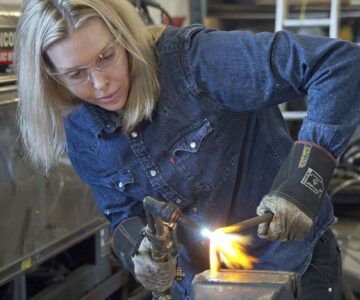
Meet the Maker: Courtney Chard
Mar 20, 2023 | | Made in the HillsHow professional welder Courtney Chard uses the tricks of her trade to craft intricate, often delicate sculptures.
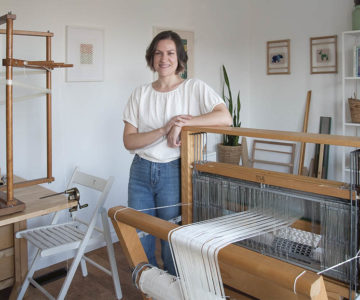
Meet the Maker: Johana Cordero
Nov 20, 2022 | | Made in the HillsFor this weaver, the warp and weft of life is much more than a metaphor.

